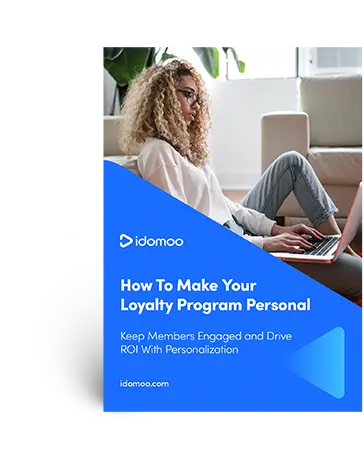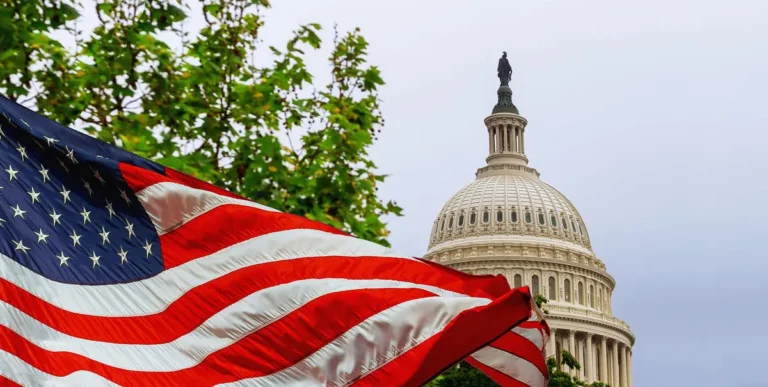In business, success isn’t just about scoring new customers — it’s also about holding onto them.
Unfortunately, customer churn exists as a challenge to this goal. Also called customer attrition, churn refers to your customers saying sayonara to your brand. So much more than just a statistical metric, your churn rate is a major indicator of brand health.
Churn chips away at your brand’s strength and hinders its growth potential. To keep your business in tip-top shape for the long haul, you need to size up this enemy, predict its next moves and hit back with countermeasures. Thankfully, recent tech advancements have simplified this task with churn prediction models.
In this post, we’re breaking down what churn models are and how they can help you retain your most precious asset: your customers. But first, let’s talk a little bit more about churn, retention and how they’re connected.
Customer Churn vs. Customer Retention
As mentioned, churn is the departure of customers from your business — losses that, if left unaddressed, can lead to a slow and steady decline in revenue.
There are 2 main types of churn: voluntary and involuntary. Voluntary churn happens when customers actively decide to leave. Perhaps they found a better deal elsewhere, their needs evolved or they had a bad experience. On the flip side, involuntary churn is initiated by external factors like credit card expirations, failed transactions or an unforeseen move.
It can be helpful to think of churn as the opposite of retention, which is when your business successfully keeps its customers. Your churn rate and your retention rate are inversely related, so the lower your churn, the higher your retention and vice versa. The trick, then, is to keep churn low by ensuring that your retention stays high.
All this boils down to one key strategy: making your customers genuinely want to stick around. To do that, you need to be able to analyze the data and understand why they leave. This proactive approach helps you stay ahead, allowing you to address issues before they escalate, minimize customer loss and build a customer-focused approach that keeps them engaged.
Here’s an example of that kind of customer-first approach from Zurich. This leading insurance company sends customers a video before their renewal is due since data shows that this time period is a common moment of churn. It’s personalized with their name and other important details for a human touch and to remind the customer of the valuable coverage Zurich provides.
Ultimately, boosting customer retention and loyalty demands a proactive strategy. By diving into the data and identifying those key opportunities to showcase your value, you not only minimize losses but also strengthen your bond with customers.
Predicting Customer Behavior With Churn Models
Consider this: rather than just reacting to churn, you’re able to predict it and take action to prevent it. Customer churn prediction models can help you do that. By analyzing historical data, patterns and various customer touchpoints, churn models reveal valuable insights, enabling us to optimize our strategies for maximum impact.
Post on
At the heart of churn prediction models lies data science and machine learning. Through data science, a large amount of data is analyzed to uncover patterns in customer behavior. Powered by those patterns, machine learning algorithms are used to build predictive models. As more data becomes available, the models adapt and update their predictions, allowing you to keep your strategies updated and effective.
With churn models, you can identify trends, irregularities and subtle signs of dissatisfaction or disengagement that may indicate a customer is about to leave. This empowers you to be proactive and take steps to prevent churn before it happens. Better yet, it can help you understand why a customer is at risk and how you might fix the issue on a wider scale.
Building Your Churn Model
So how do you get started with churn models? Well, it starts with the foundation: data.
1. Data Collection and Preparation
Your model is only as good as the data it’s fed. Gather relevant customer data, including demographics, transaction history, interaction frequency, usage patterns, number of customer service interactions and any other data points that might indicate churn. The more varied and comprehensive your dataset, the better you can understand and predict potential churn.
Tapping into the data sources of CRMs or analytical tools, you can pull data from various touchpoints throughout the customer journey. Behavioral patterns can be uncovered from website visits, app usage and social media interactions, while transaction records and customer feedback provide insights into satisfaction and loyalty.
Once you have gathered your data, it’s time for data preparation, where you clean and preprocess it to ensure it’s primed for modeling. This includes removing duplicate data, correcting errors and filling in missing values. You may also need to transform your data into a format that is compatible with your modeling software.
2. Feature Engineering
Feature engineering involves selecting and transforming specific pieces of data to improve the accuracy of a model.
You can think of feature engineering as figuring out the right ingredients for the perfect recipe, except the “ingredients” are your data and the “recipe” is your churn prediction model. In that sense, this step is the process of picking the most important ingredients and preparing them in a way that helps the model have the “taste,” or results you want.
So instead of using all available data, you’d have a data scientist identify the most valuable information needed to predict churn, such as how frequently a customer interacts with the product, their purchase history or any signs of displeasure via customer support interactions.
3. Model Selection
Next, it’s time to pick your machine learning model(s). These are the sets of mathematical rules and algorithms that will analyze your data, identify patterns and make predictions. There are a variety of ML models to choose from, and it’s often necessary to use multiple methods to predict churn.
These methods are grouped as classifiers, or algorithms specifically designed to solve classification problems like predicting customer churn. In a classification problem, the goal is to assign a label to each observation, such as whether a customer is a churner or non-churner.
- Binary classification. A type of data analysis that deals with determining one of 2 possible outcomes. This is the foundation for more complex analyses, as it establishes your goal of categorizing your customer base into 2 groups: those likely to churn and those likely to stay loyal.
- Logistic regression. A statistical method that’s used for modeling a binary outcome with one or more predictor variables. In this case, it analyzes the relationship between the independent variables (customer-related factors) and the probability of churn, helping you understand how different factors impact the likelihood of a customer leaving.
- Decision trees. A visualization of decision-making processes, where a series of questions are asked to classify customers. This helps identify patterns that lead to churn, creating a roadmap of the key factors that contribute to customer churn.
- Random forest. An ensemble learning method that combines multiple decision trees to make more accurate predictions and improve the reliability of churn predictions.
Essentially, when it comes to building a churn prediction model, you’re trying to teach your computer to recognize patterns that indicate whether a customer is likely to leave or stay. Python, a popular programming language, is often used for this because of its versatility and wealth of libraries for data analysis and machine learning.
4. Model Training, Optimization and Evaluation
Before a model is ready for real-world action, it goes through “training.” This involves having the training model analyze historical data to find the signals that may indicate a customer is about to churn. To make it as accurate and reliable as possible, you’ll optimize the model throughout this process until it’s ready for a “final” evaluation.
To ensure that your model performs well with new data, you conduct a “validation” check. Think of it as the model’s final exam. This is when you present it with the validation set — a set of data intentionally reserved for this occasion. By giving the model a new situation, you can confirm that it genuinely understands the patterns and isn’t merely repeating what it already knows.
The goal is to ensure the model can handle real-life challenges before putting it to work. The more optimized the model becomes through training, the more reliably it can predict when a customer is at high risk of churn. Given time, as more data becomes available, these models can be continuously improved and fine-tuned.
5. Deployment and Monitoring
Once you’re happy with the model’s performance, you can deploy it. Make sure to implement a robust monitoring system to track its performance over time. You should also continuously update the model as new data becomes available so that it remains relevant and effective even as the landscape changes.
In conclusion, building a churn reduction model is a systematic approach that requires data science expertise and a deep understanding of your business goals. By following these basic steps, you can equip your business with a powerful tool to proactively address customer churn and foster long-lasting relationships with new and existing customers.
A CX Tool To Reduce Churn
Predicting churn is just the beginning of the battle — the real game-changer lies in how you use that information to actively retain your customers and enhance their experience. Enter Personalized Video, a dynamic customer experience tool that has been used to reduce churn rates across industries.
Think about it: when a customer is considering leaving, a generic email or a mass notification might not cut it. But a Personalized Video, crafted specifically for that customer and sent right when they’re at risk of churning, delivers a powerful message that captures attention and creates a connection.
At Idomoo, we’ve witnessed firsthand how this innovative solution has been leveraged by diverse industries, from renowned travel brands to telecom giants. Check out how EE proactively reached out when “times were tight” and reassured its customers of the value with a personal message starring actor Kevin Bacon!
With Personalized Videos like the one above, our clients have seen results such as:
- 37% 90-day churn reduction
- 17x user reactivation
- 85% renewal rate
Curious to see how Personalized Video can work wonders for your business? Reach out to us below and we’ll walk you through the countless use cases and solutions it offers, from churn reduction to improved loyalty and beyond.





